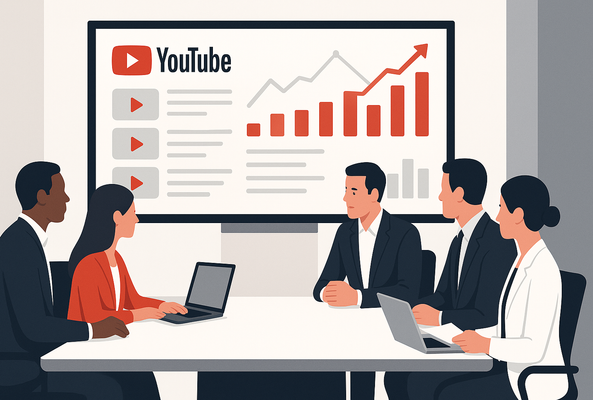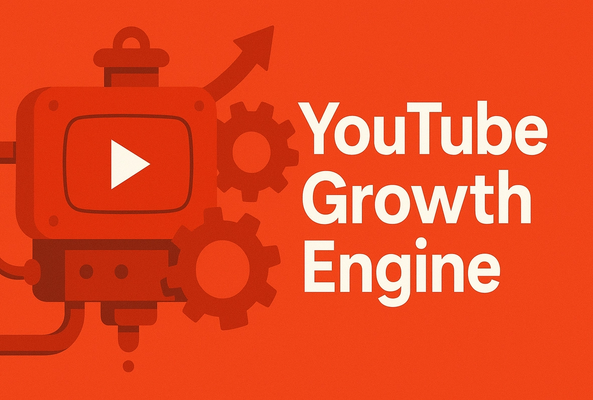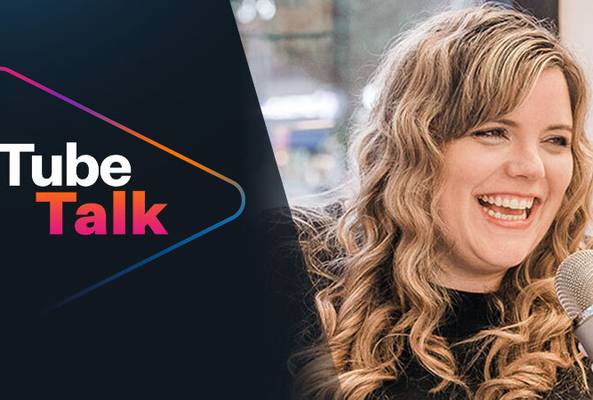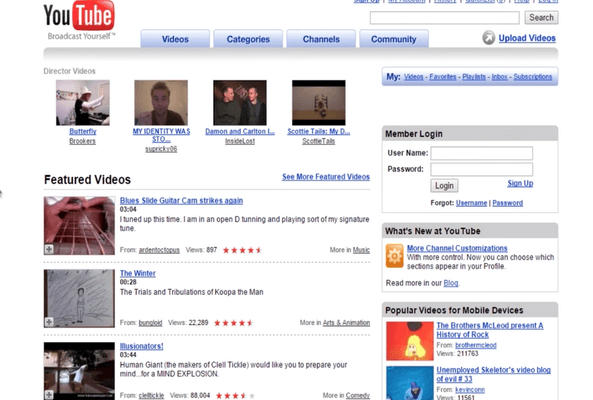Darryl is a writer with years of experience in online video software, combining technical expertise with a passion for educating audiences. When not writing, he’s tending to his farm surrounded by horses, chickens, dogs, and somehow cramming more plants into his garden than it could ever reasonably hold.
Top 6 Missed YouTube Opportunities for Brands We See (and Fix)
Why Is Marketing YouTube Videos Crucial for Brands?
Many brands think they’re “on YouTube” because they’ve uploaded a few videos or embedded them on their website. But being present on the platform isn’t the same as leveraging it. Without a clear strategy, brands miss out on YouTube’s full potential to drive search visibility, community engagement, and long-term business growth.
Based on hundreds of channel audits and consulting sessions, these are the most common YouTube missed opportunities we see brands make, and how to fix them.
Stop Guessing. Start Growing.
Join 20M+ creators using vidIQ to get more views, subscribers, and success on YouTube.
1. A Backwards YouTube SEO Strategy
Many brands think, “If we use the right keywords, our audience will find us.”
Yes, YouTube is a search engine, but on average, only 20% of views come from Search. The other 80% are recommended to viewers. That means SEO alone isn’t enough. Your videos need to work within YouTube’s recommendation system, not just target the “best” keywords.
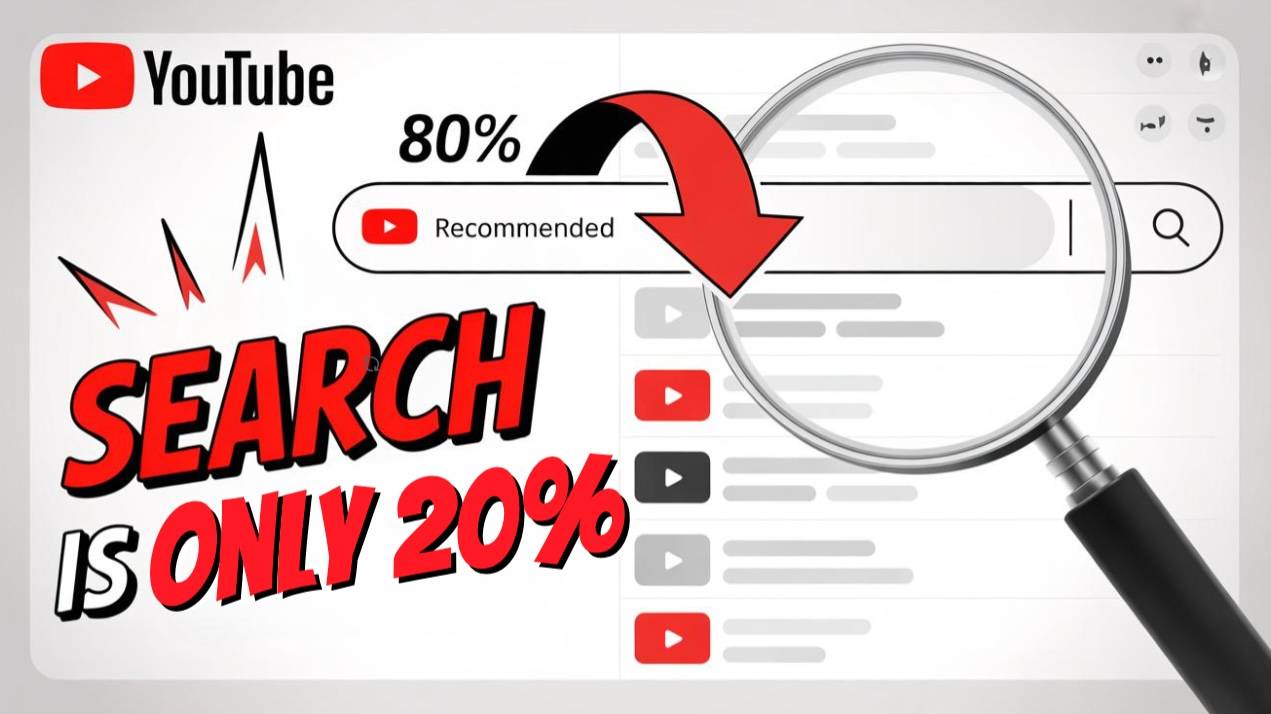
What usually goes wrong:
- Titles and descriptions use brand language instead of audience language.
- Keywords are “stuffed” without a clear promise in the title and thumbnail.
- Search terms are treated like a magic switch instead of inputs to better content and packaging.
The fix: Think of YouTube SEO as audience language + clear promise + clean context:
- Start with the viewer’s problem, in their words. Use vidIQ’s Keyword Research to find the exact terms your audience uses (intent, variants, difficulty), then save the winners to guide your programming.
- Frame a clear promise and angle. Check Competitors and Most Viewed to see how top videos package similar topics. Choose a differentiated hook that still matches audience phrasing.
- Cut the keyword stuffing. Write your title and description for humans first, clear at a glance, compelling to click, then refine with AI Title/Description suggestions and the SEO Scorecard to ensure the right context without overloading keywords.
Pro Tip: Use vidIQ to validate your audience’s language and angles before you hit record. Then work with a YouTube strategist to turn those insights into a repeatable content and testing cadence.
2. Poor Titles and Thumbnails
Even the best video content can go unwatched if the title and thumbnail don’t spark interest or clearly communicate value. On YouTube, these two elements are your first impression. If they miss the mark, your audience never clicks.
We regularly see brands using internal naming conventions like “XYZ Product Overview” or “Welcome Message from the CEO.” While these might make sense internally, they fail to tell a viewer why they should care. These titles lack clarity, curiosity, and often overlook keywords altogether.
The same problem shows up in thumbnails. Many are overloaded with text, feature generic visuals, or simply mirror the video’s title. Instead of stopping the scroll, they blend into the background. Viewers don’t get a reason to click, and the algorithm notices the low engagement.
Titles and thumbnails directly affect your click-through rate (CTR), one of the most important metrics YouTube uses to evaluate your content. A low CTR signals to the platform that your video isn’t relevant or engaging, which means fewer impressions and fewer chances to grow.
The fix: Craft titles that mix curiosity and clarity. Design thumbnails that grab attention and clearly communicate the value of the video. These two elements have the biggest impact on click-through rate.
Pro Tip: If your team needs a starting point, tools like vidIQ’s AI Title Generator can help you test different angles using high-performing keywords and proven title structures and vidIQ’s AI Thumbnail Maker lets you quickly create scroll-stopping visuals using simple prompts, no design experience required.
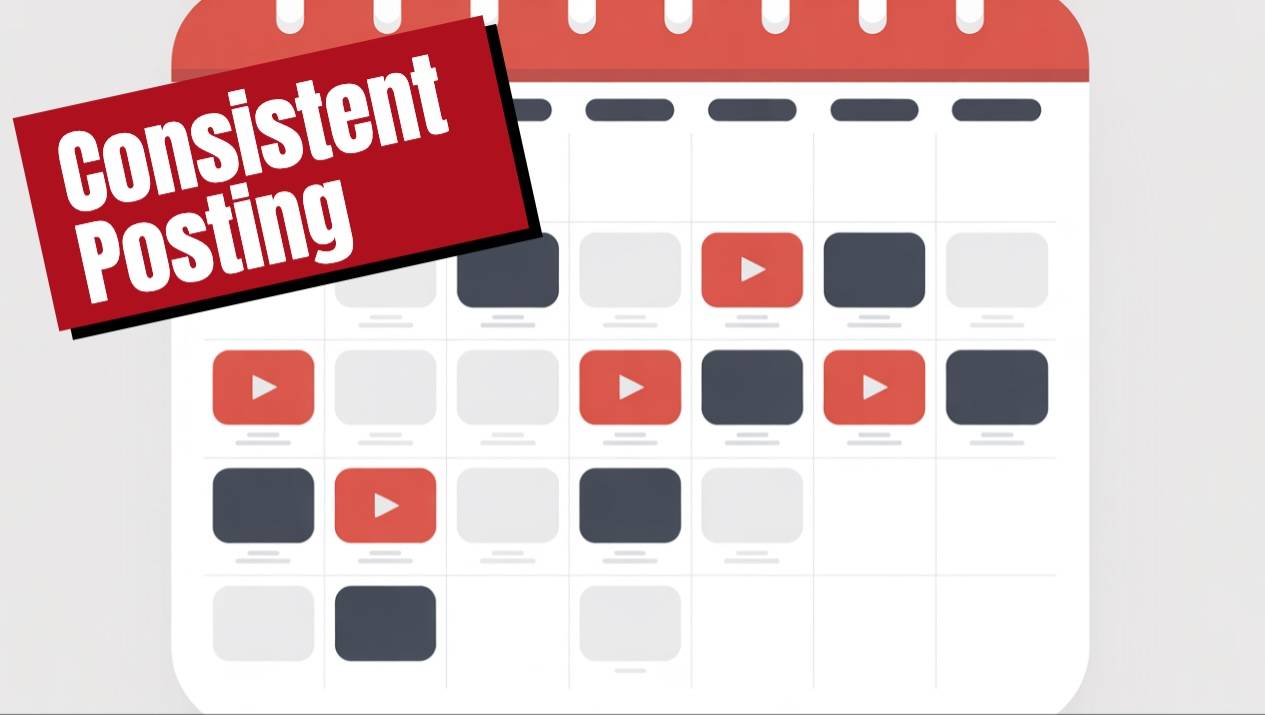
3. Inconsistent Posting (or No Cadence at All)
Too many brands treat YouTube like a campaign platform. A few videos go live around a product launch, event, or announcement, and then the channel goes quiet for weeks or even months.
YouTube favors channels that post consistently. Regular publishing signals to the algorithm that your channel is active and dependable. It also sets clear expectations for your audience, encouraging them to return and engage.
The fix: Create a posting schedule your team can stick to. It does not need to be frequent. What matters most is consistency.
Pro Tip: Use a content calendar to plan ahead. Partner with a vidIQ YouTube specialist to co-create it and design repeatable formats that make production easier.
4. No Audience Funnel Strategy
Too many brands focus on video creation but forget to connect that content to broader marketing or business goals.
A video may get views, but without a strategic next step, it becomes a dead end. Viewers finish watching and drop off instead of moving deeper into your brand experience.
Many brand videos end without a clear call to action. They don't ask viewers to subscribe, visit the website, join a newsletter, or watch another video.
The fix: Start thinking in terms of viewer journeys. Each video should have a purpose, and every purpose should include a next step. This could be watching another video, visiting a landing page, subscribing to the channel, or signing up for a free resource.
Pro Tip: Make sure each video has an end screen to guide viewers to a next step.
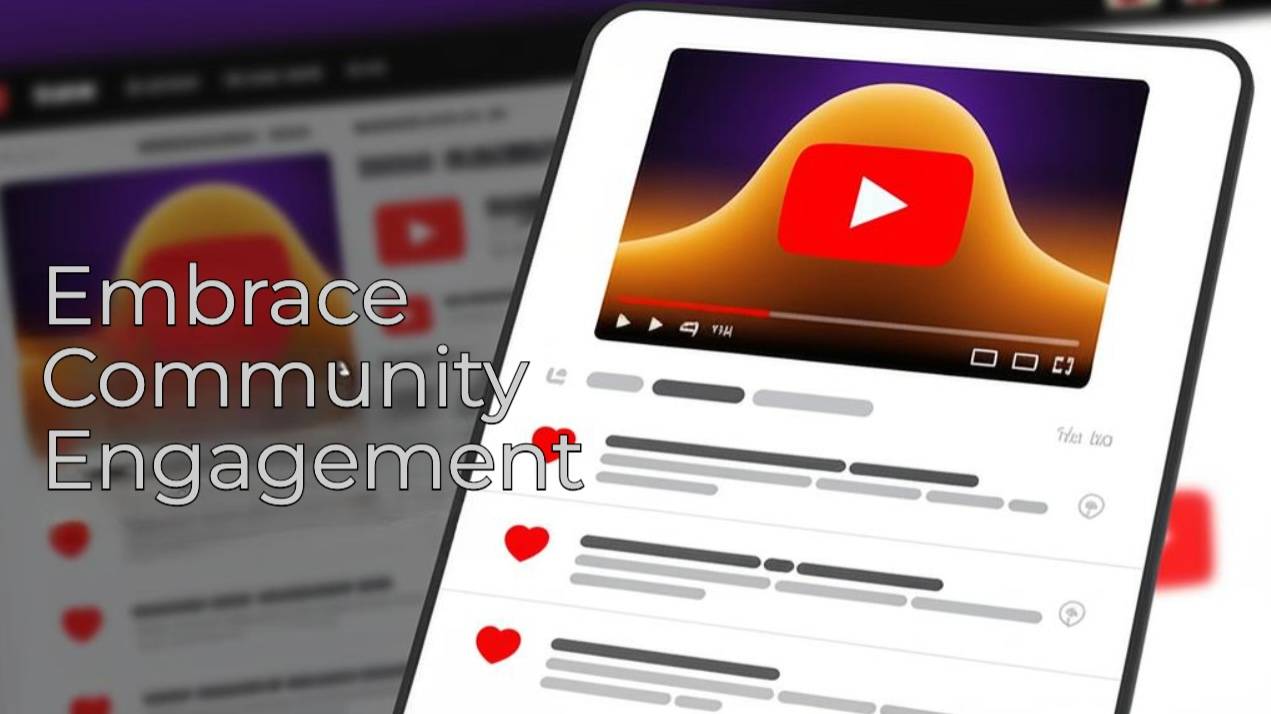
5. Ignoring Community Engagement
Brands often overlook YouTube’s community features. They fail to reply to comments, ask questions, or encourage discussion, and that silence is a missed signal to YouTube’s algorithm.
The Community Tab, in particular, is underused. This feature allows brands to post polls, images, and updates to stay top of mind between videos.
The fix: Actively respond to comments. Post on your Community Tab regularly. Encourage viewer interaction since it boosts visibility and builds loyalty.
Pro Tip: Use end screens to recommend relevant videos or playlists. Add strong calls to action in your video descriptions and pinned comments. Mention next steps in your voiceover or on-screen text. The goal is to make the transition from passive viewer to active participant as easy and intuitive as possible.
6. No Series or Episodic Content
One-off videos can perform well in the short term, especially if they align with a trending topic or campaign. But relying solely on standalone videos makes it difficult to grow a loyal audience or keep subscribers coming back.
Long-term success on YouTube often comes from creating structure and predictability. Just like with podcasts or TV shows, audiences are more likely to return when they know what kind of content to expect and when to expect it. Episodic content builds viewing habits. It gives your audience a reason to subscribe, not just because of one good video, but because they want to see what comes next.
The fix: Develop a content series. Repeatable formats (like interviews, product breakdowns, or educational playlists) create habits. When viewers know what to expect, they’re more likely to subscribe and return.
Pro Tip: Develop repeatable content formats that your team can execute on a regular basis. This could be a weekly product Q&A, a recurring customer story series, a behind-the-scenes look at your brand, or an educational playlist focused on your industry.
Make Strategic Fixes, See Scalable Results
You don’t have to overhaul your channel overnight. In fact, most of the growth we see in brand channels comes from consistent, strategic improvements and not massive reinventions.
Why is marketing YouTube videos crucial for brands?
Because without it, your channel stays passive. With it, your channel becomes an always-on growth engine; driving leads, building community, and reinforcing your brand message at scale.
If you're serious about making YouTube a core part of your marketing strategy, the first step is simple: audit your channel. Find what’s working. Fix what’s not. And if you want expert help along the way, we’re ready when you are.
FAQs
Why is marketing YouTube videos crucial for brands?
Marketing on YouTube is more than just uploading content. It’s about positioning your videos for discovery, engagement, and long-term growth. Without a strategy, even great videos get buried. With the right marketing approach, YouTube becomes a growth engine that drives search visibility, nurtures community, and converts viewers into loyal customers.
What are the most common YouTube mistakes brands make?
The biggest mistakes we see include:
- Over-relying on search instead of optimizing for recommendations.
- Using poor titles and thumbnails that fail to attract clicks.
- Posting inconsistently or without a clear cadence.
- Ignoring community engagement and funnel strategy.
- Relying on one-off videos instead of creating series or episodic content.
These gaps leave significant growth potential untapped.
How can brands improve YouTube click-through rate (CTR)?
Focus on the two biggest levers: titles and thumbnails. Titles should balance clarity with curiosity, using your audience’s language instead of internal jargon. Thumbnails should stand out, spark interest, and clearly signal the value of your video. Together, these elements boost CTR, which tells YouTube your content deserves more impressions.
How often should a brand post on YouTube?
Consistency matters more than frequency. Whether you post once a week or twice a month, the key is to publish on a predictable schedule. This trains both the algorithm and your audience to expect new content. Use a content calendar to plan ahead and build repeatable formats to make production manageable.
20k+ 5 Star Reviews
Ready to put this into action?
Use vidIQ to find your next video idea, pick better keywords, and optimize every upload.

